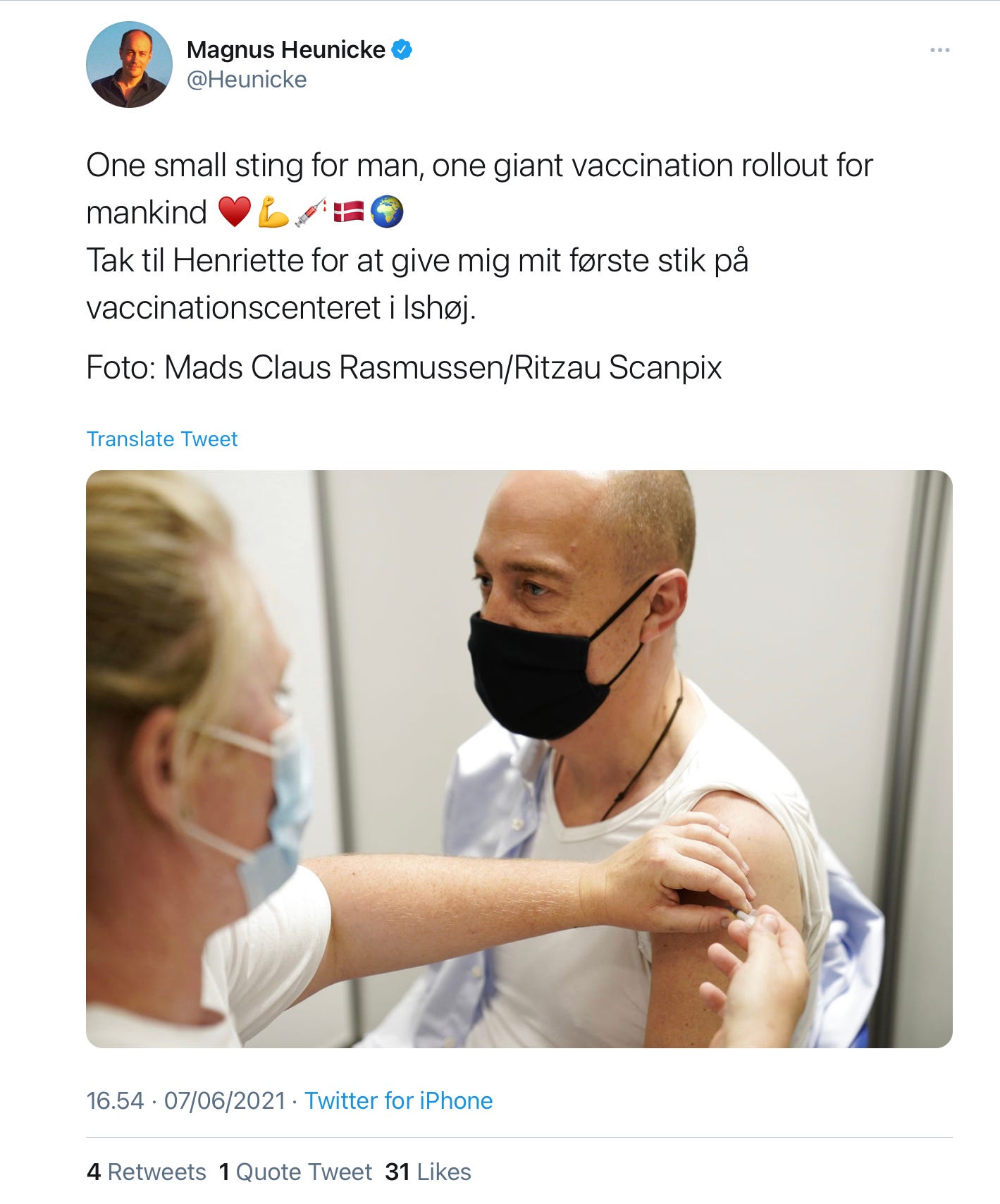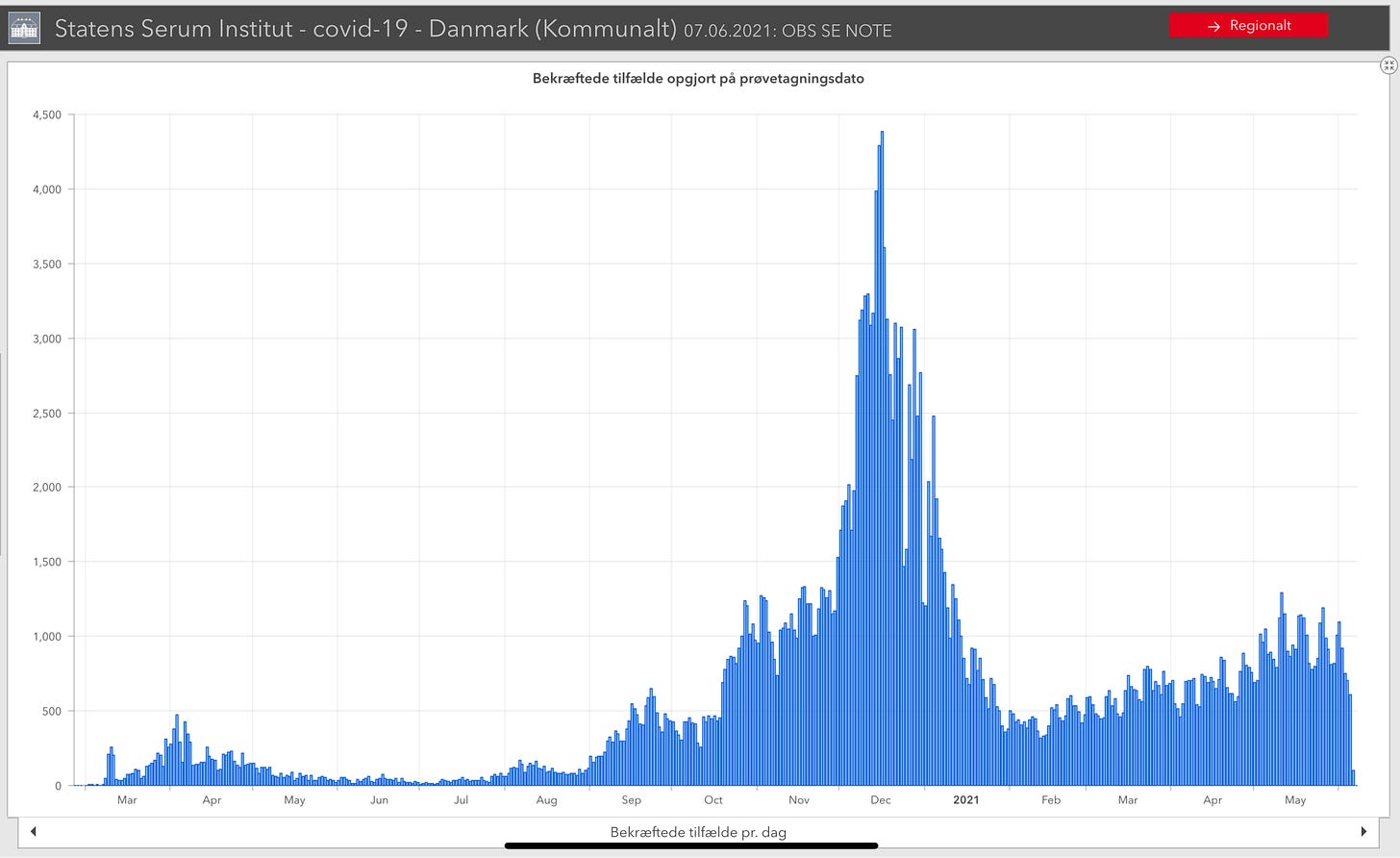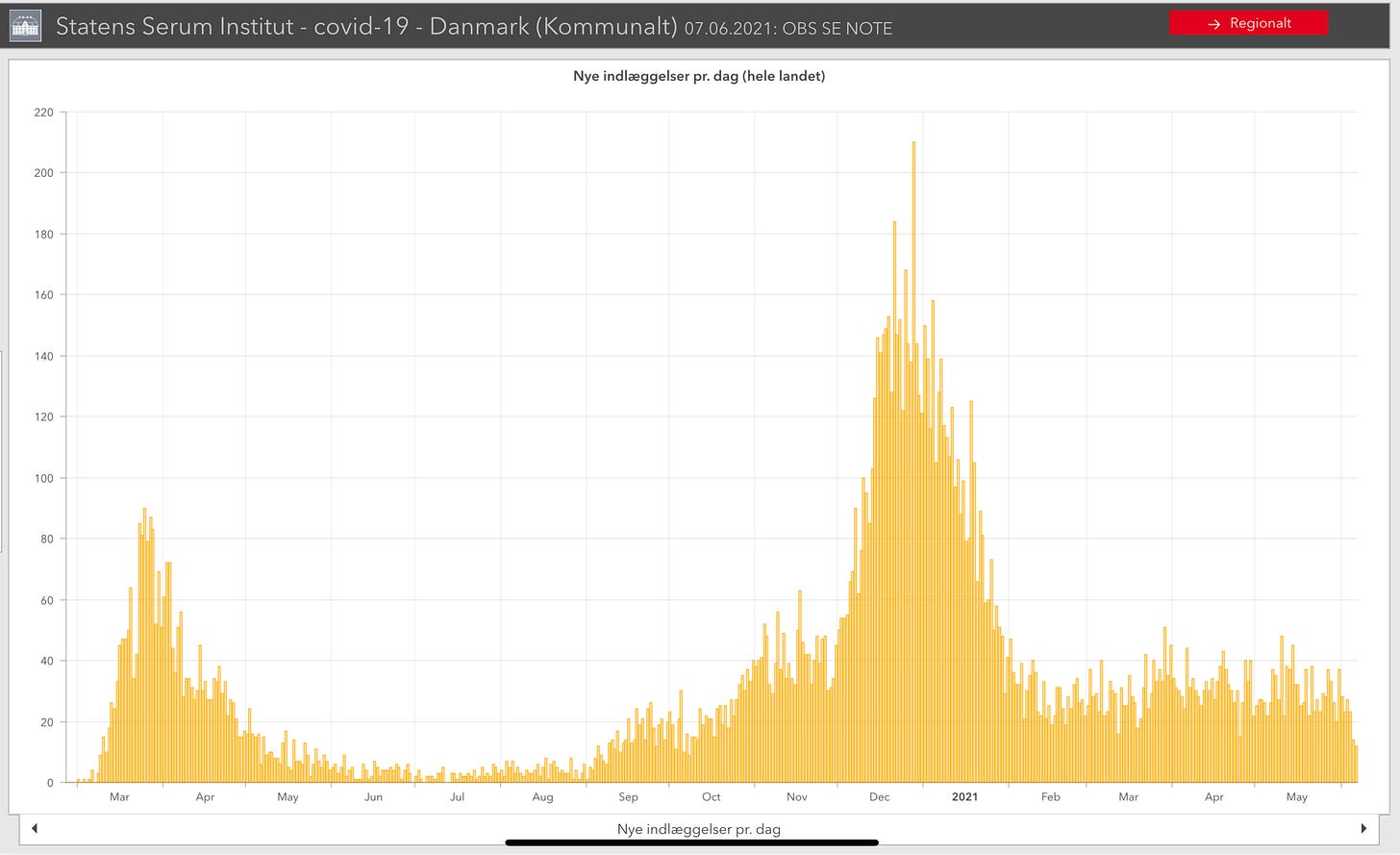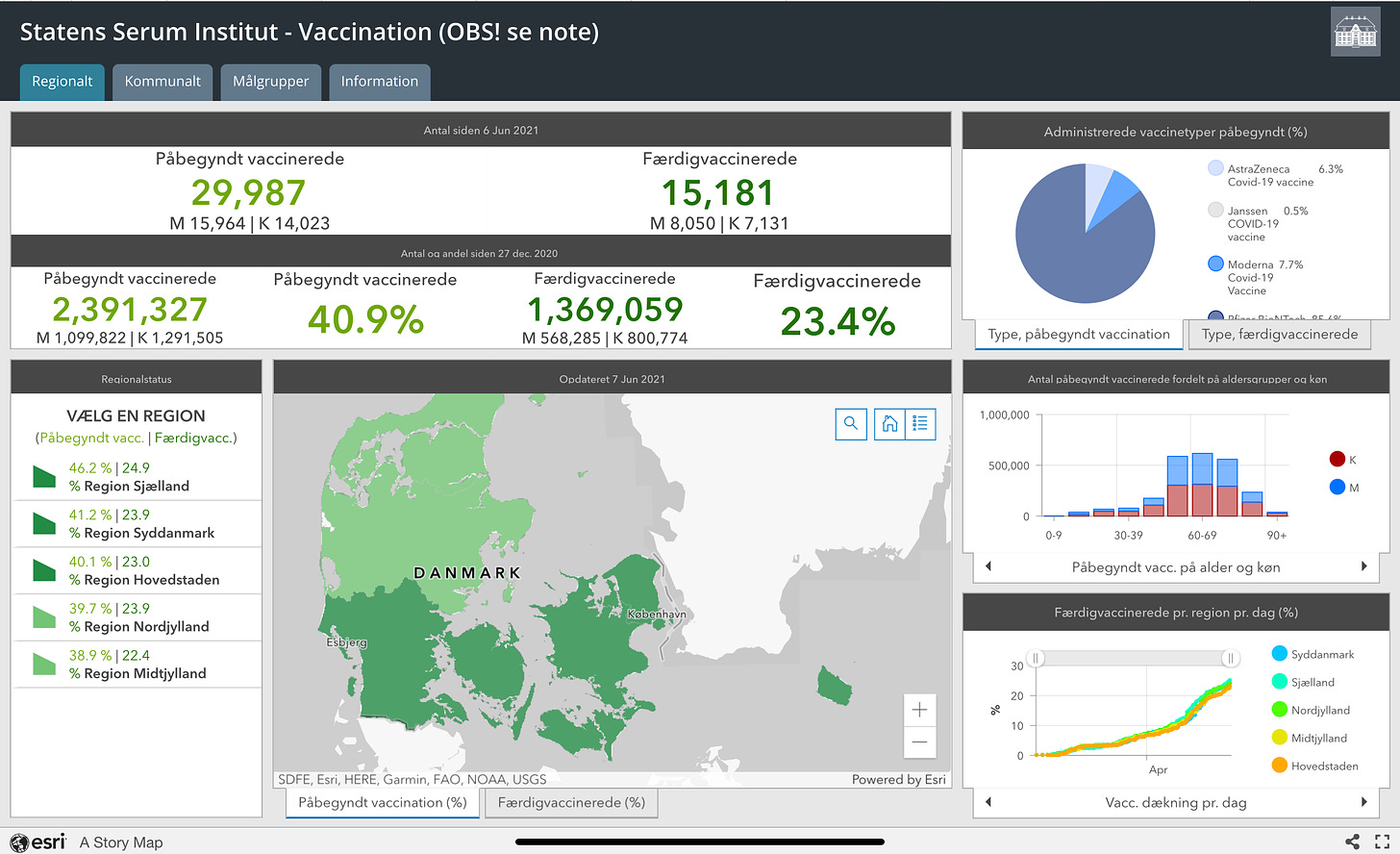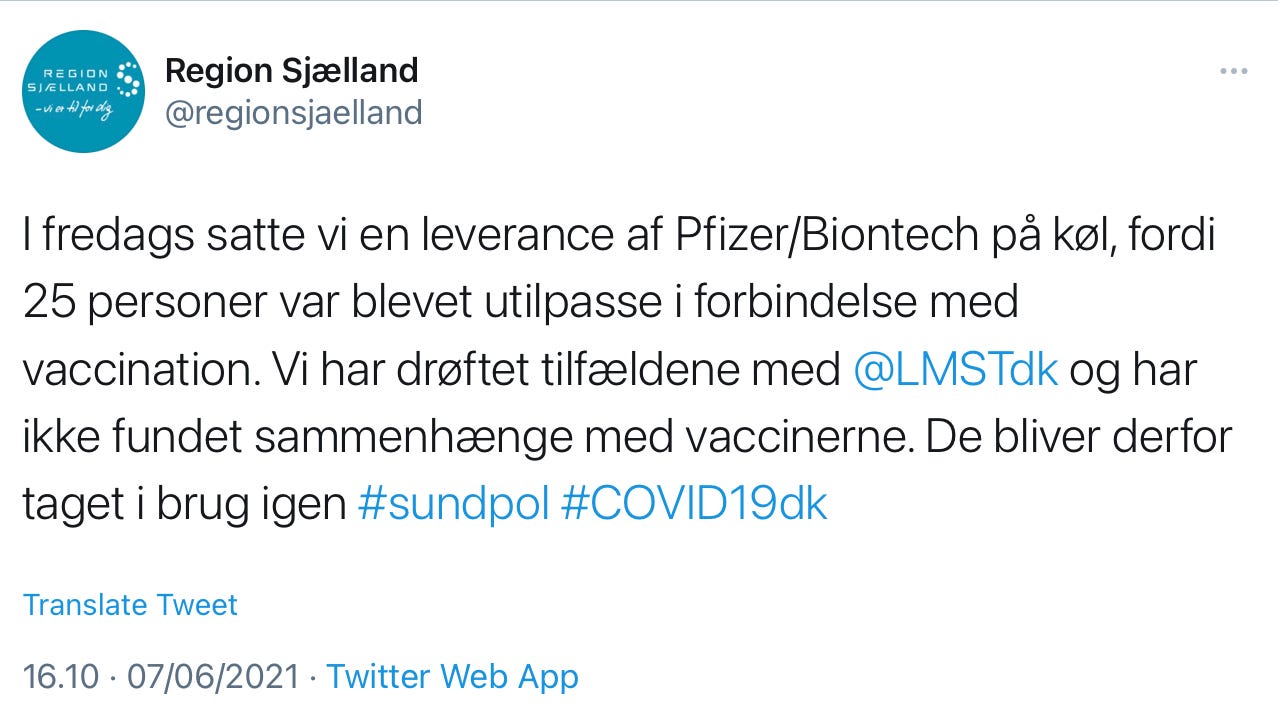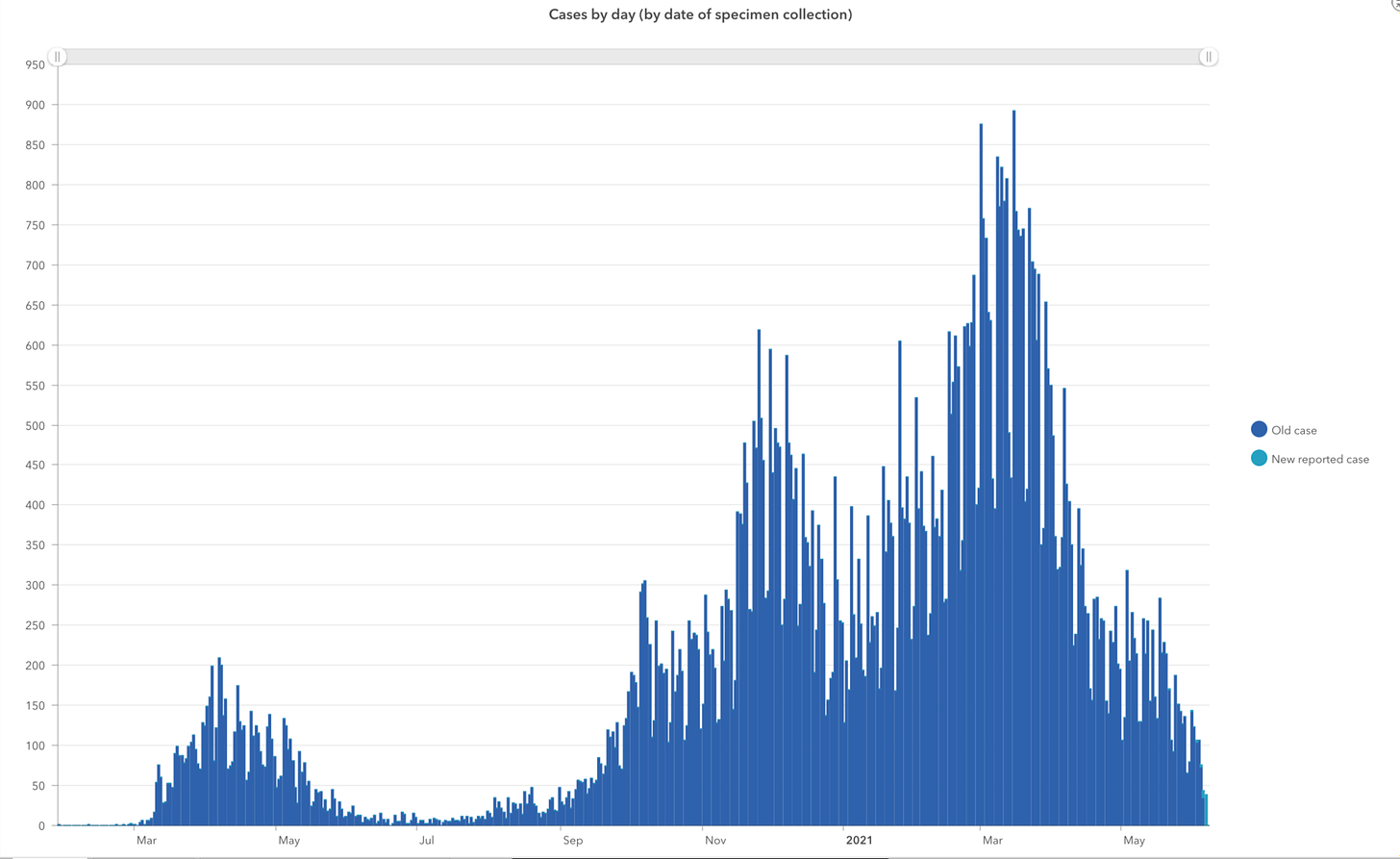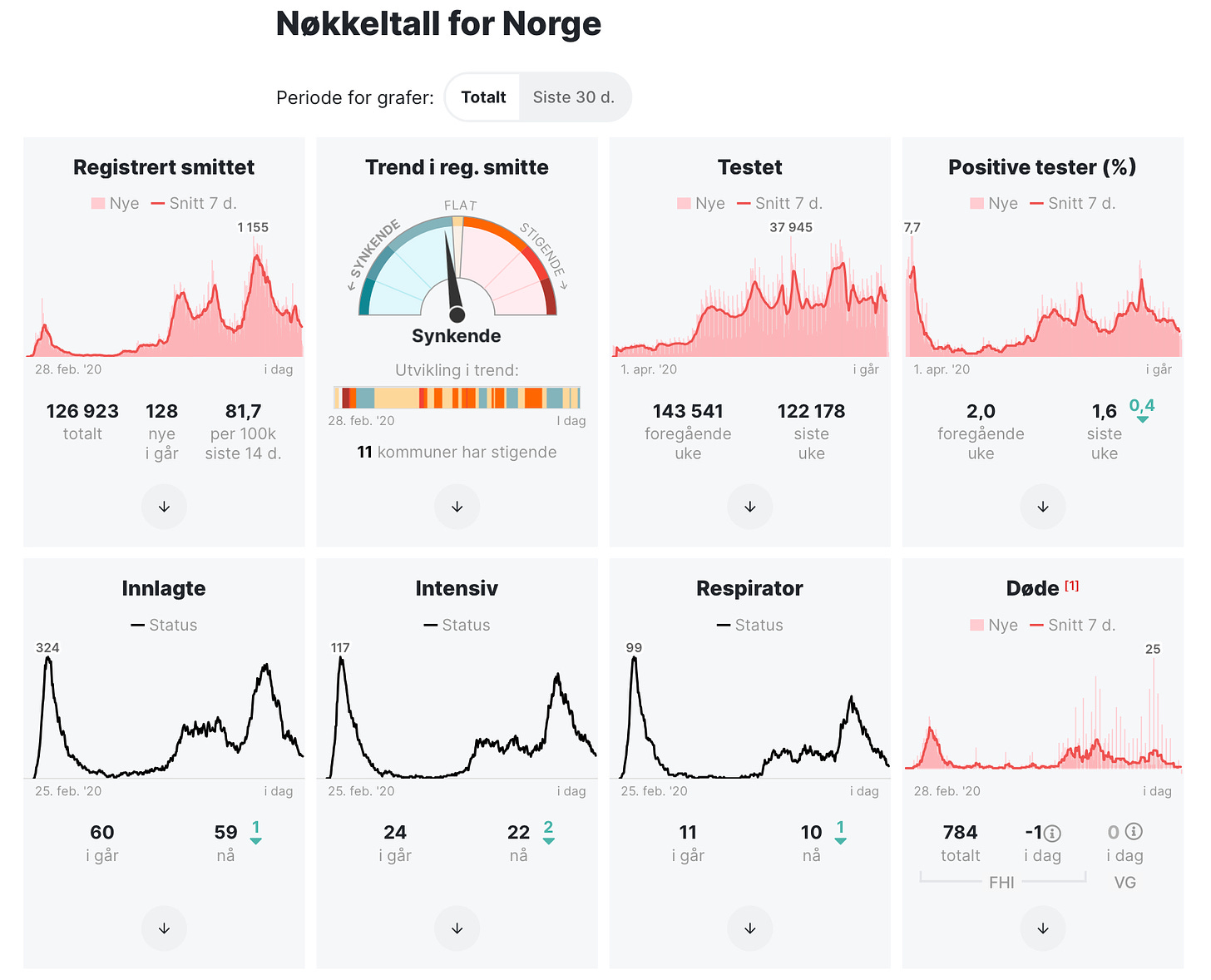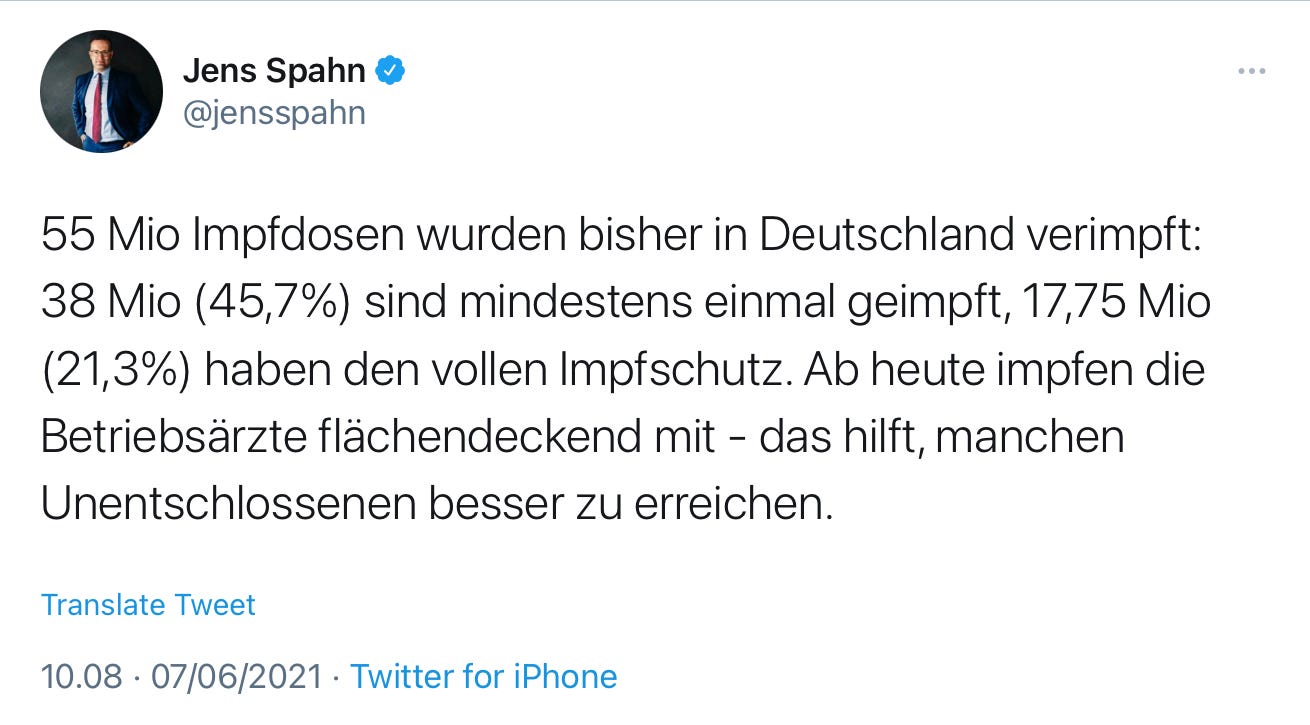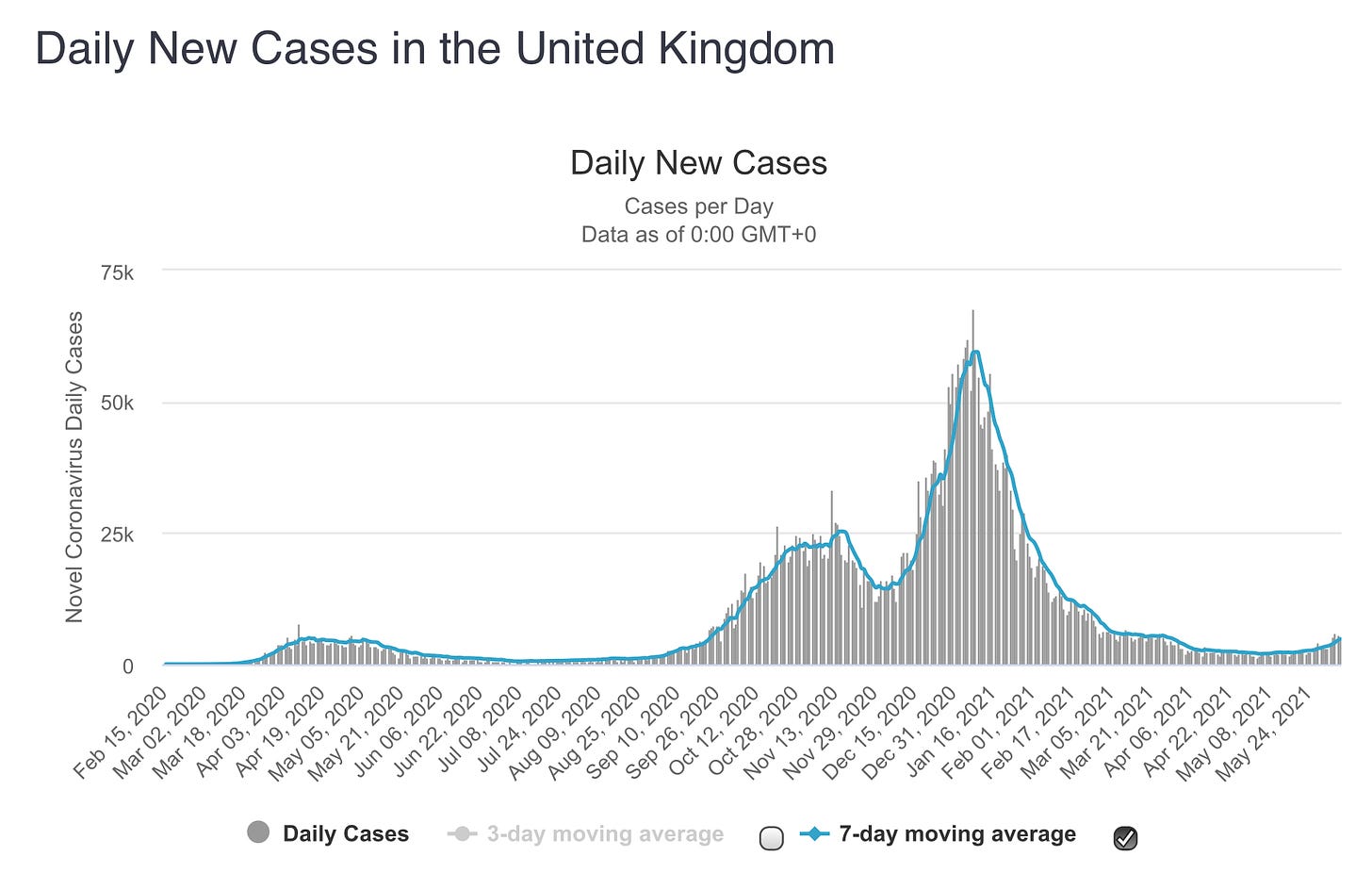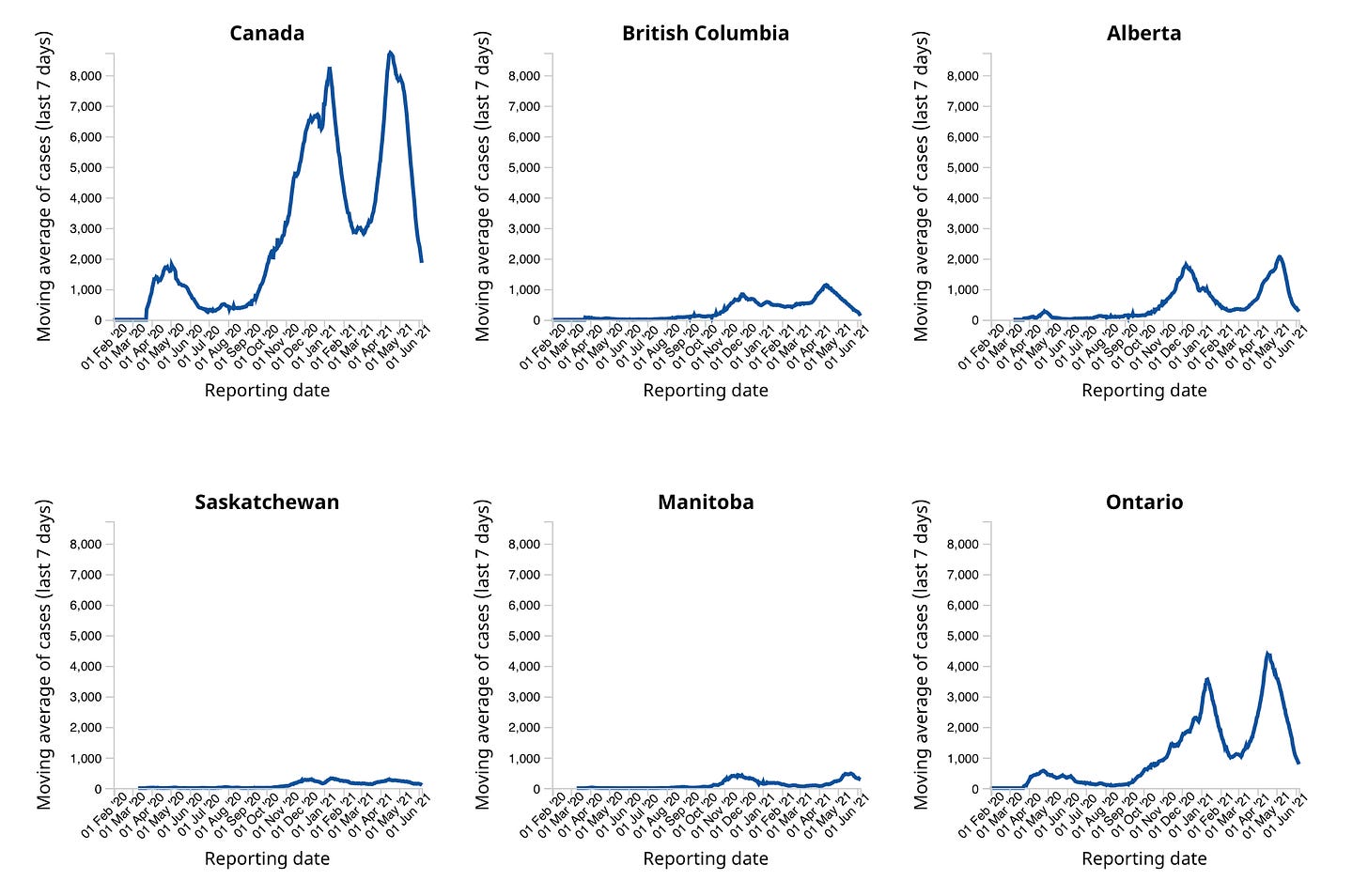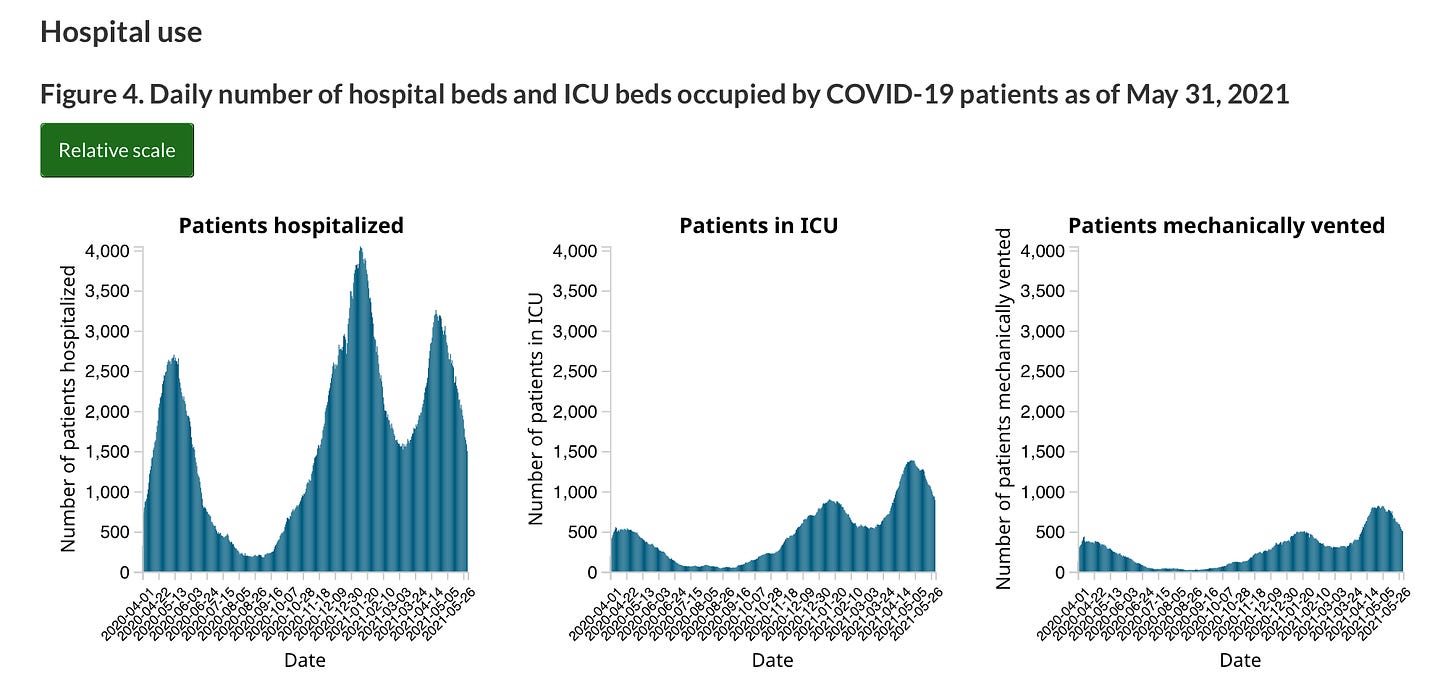🇩🇰
The Staten Serum Institut has found that a very small percentage of vaccinated people get COVID and of those, an even smaller number get seriously sick. Researchers at the SSI poured over infection cases from December 27 when the vaccination campaign began in Denmark, until June 1. Of the 123,179 positive test results, they found, 7,135 occurred after vaccination.
Researchers did an even deeper dive and found 5,801 infections, or 4.7%, came after a first dose. Of those, there were 585 hospitalizations within two weeks of a positive test and 312 deaths within 30 days.
An even smaller number 1,334 cases or almost 1% were found among people who had two doses. An even smaller number 972 were “breakthrough infections” occurring after the full effect of the vaccine had been achieved, two weeks after a second dose. The overall percentage of breakthrough infections is 0.1%.
In the overall 1,344 cases, the institute found 147 hospitalizations within 14 days of a positive test and 40 fatalities within 30 days. Among the breakthrough infections, there were 107 hospital admissions and 22 deaths.
Researchers at the Staten Serum Institut even tried to examine what vaccines people had been given to see if there was any with a disproportionate number of hospitalization and deaths.
SSI Ward Doctor Rebecca Legarth:
“Since the vaccines have been given to different target groups, it is not possible to compare data for the different vaccines directly. At the same time, there is a difference in when the individual vaccines were rolled out, and thus how large an infection pressure was at the time in question.”
What about variant infections?
“Until now, we have only seen a few cases of breakthrough infections for some of the special variants. There is some variation in the incidence of breakthrough infections for different variants, but data are very limited and therefore there is currently no evidence that particular virus variants cause breakthrough infections to a particularly high degree. But this is an area SSI follows closely.”
Legarth also cautions the numbers aren’t carved in stone.
"We do not know the details of why the individuals have been hospitalized or died. Therefore, the admissions and deaths can not be attributed with certainty to COVID19, but since they happened around the time of a positive PCR test, they are classified as COVID-related.”
She also notes some people could have become infected with COVID just before getting their first vaccination dose, further complicating matters.
-
“One small sting for man, one giant vaccination rollout for mankind.”
Denmark’s Health Minister Magnus Heunicke had his first vaccination dose this afternoon in Copenhagen. And yes he actually said that.
-
The Danish government has posted an English-language website up for those who are looking at coming to Denmark as tourists in the age of COVID. It has a lot of information and looks to answer the many questions people might have who are navigating traveling during a global pandemic. If you or someone you know might find this helpful, you can check it out HERE.
-
Denmark is reporting a partial picture over the last 24 hours of 459 COVID infections and two coronavirus deaths. According to the Staten Serum Institut a technical issue has prevented private providers from reporting testing numbers and results.
Yesterday there were 144,087 corona tests (64,327 PCR and 79,760 rapid, for a (PCR only) positivity percentage of 0.71%. Again keep in mind this is a partial picture without literally hundreds of thousands of private testing results.
COVID hospitalizations (137) inched down (-1) while the number of infected people in an ICU (27) also edged down slightly (-2) and of those the number on a ventilator (19) dropped slightly as well (-3).
On the vaccination front, to date there have been 2,391,327 1st dose vaccinations (40.9% of the population) while 1,369,059 people (23.4%) are now fully vaccinated.
Region Sjælland said it put a hold on a batch of the Pfizer/BioNTech vaccine last Friday after 25 people felt unwell after vaccination. It says after working with the Danish Medicines Agency, it was decided there was no connection to the vaccine. The batch is now back in use.
-
Region Midtjylland received 102,000 vaccine doses this week. Most of them are Pfizer/BioNTech. The health region says they will go to first vaccinations for the target groups currently on deck. Those will be mainly those in the 16 to 19 years old and 45 to 49 years old age groups. To date, 287,600 people (21.5%) are fully vaccinated while 497,500 people (37.3%) have one dose.
-
The Staten Serum Institut has updated its PCR test to detect concerning new variants. This is the fourth evolution of the PCR test in Denmark. The updated test Variant PCR can now detect the concerning Delta variant B.1.617.2.
The newly revamped test has been in operation at testing centers around the country as of today. It can detect a number of variants of concern.
B.1.1.7 (Alpha, originally British variant)
B.1.351 (Beta, originally South African variant)
P1 (Gamma, originally Brazilian variant 1)
N439K variant / Y453F (mink variant)
B.1.525
Variants with the mutations E484K and N501Y.
B1.617.1-3 (native Indian varieties, including Delta variety)
Variants with the mutation L452R
TestCenter Danmark's director Anne-Marie Vangsted:
“With the Variant PCR tests, we can use a quick method to screen for the most worrying SARS-CoV-2 variants that are in circulation in Denmark right now. We are pleased that we can now use a fourth version that can also purposefully track the B.1.617 variants.”
The SSI says the upgraded PCR test helps with rapid screening of each positive test for the variants and mutations listed above providing a result in 12 to 24 hours.
🇪🇺🇩🇰🇸🇪
The European Foundation for the Improvement of Living and Working Conditions (Eurofound) has conducted a survey on whether people in the EU want to get vaccinated. It found a quarter of people living in Europe are hesitant to take the COVID vaccine, with men (29%) being more anti-vaccine than women (25%). The survey found that vaccine hesitancy was strongly associated with trust and social media use.
According to the survey people who spend the most time on social media and use it as their main source of information are much more likely to be opposed to vaccinations. On the issue of trust, the countries with the lowest levels of trust in government had the highest levels of vaccine hesitancy, while uptake is highest in countries with high levels of social trust.
Among the Nordics, 80.8% of survey respondents in Sweden said they will get vaccinated, much higher than the 64% European average. But social trust in Sweden has declined during the pandemic. Denmark was the only country in the EU to see trust in the government increase.
Eurofound concludes “with more than a quarter of Europeans vaccine-hesitant, a clear, convincing, and consistent communication on the safety of vaccines will be crucial to reassure citizens’ concerns.”
🇸🇪
In Sweden, Region Stockholm says it is still sorting out a backlog of infection reports due to the infectious disease database being taken offline a few weeks ago. So region cautions its numbers are still in flux and could change once all the kinks are worked out. As of right now there are 104 people in hospital, with 31 of them in an ICU.
Acting Director of Health and Medical Care Johan Bratt:
“It is gratifying that the decline in the number of patients with COVID19 continues. It gives healthcare the space to make up for certain care that has been postponed during the pandemic and to give healthcare employees a much-needed recovery during the summer. Now it is important that you get vaccinated as soon as possible. You who are vaccinated with both dose 1 and dose 2 have the best possible protection and contribute to reducing the risk of a wider spread of COVID19.”
In the region, 45.1% of people over the age 18 have one vaccine dose while 17% have had both.
Region Stockholm says all but two districts and municipalities have vaccination rates exceeding 80% for those 65 years old and older. The two lagging slightly behind are Skärholmen (78.1%) and Rinkeby-Kista (75.9%).
Vaccine Coordinator Magnus Thyberg says vaccination uptake is very high.
“Even in the areas where vaccination coverage increases somewhat more slowly. We see no signs that the willingness to vaccinate differs significantly between different areas. Most people want to get vaccinated.”
He says they have a lot of initiatives, in several languages, to encourage vaccination and to make it more accessible.
🇫🇮
Finland has registered 55 infections and had no new corona fatalities since yesterday’s update.
To date there have been 2,636,209 (47.3% of the population) 1st dose vaccinations while 610,085 people (11%) are now fully vaccinated.
-
Finland’s pharmaceutical watchdog, FIMEA, is encouraging doctors to keep a close eye out for rare but potentially fatal side effects from AstraZeneca vaccinations. The agency says the chances of experiencing severe blood clotting, bleeding, and/or low platelets is about 1 in 50,000. FIMEA says another symptom to watch for are long and increasingly worsening headaches, saying this might be a sign of sinus thrombosis.
Finland still uses AstraZeneca, unlike its Nordic neighbours, but it has not approved using the Johnson & Johnson vaccine.
🇳🇴
Norway has added 548 infections and had no new virus deaths since yesterday’s update.
COVID hospitalizations (59) and those on a ventilator (10) are down (both -1) ICU numbers (22) are also down (-2).
To date 33.19% of Norwegians have had one vaccine dose and 21.88% have had both.
-
Deliveries of vaccine doses have increased to the point Norway is now speeding up its vaccination efforts. The Norwegian Institute for Public Health is reducing the gap between the first and second doses from 12 weeks to nine. The move is retroactive to inoculations administered in week 20.
Infection Control Director Geir Bukholm says this will accelerate the pace of vaccinations.
“Reduction of dose intervals is part of the program strategy to ensure as fast, full vaccination of the population as possible.”
He says the health agency now needs to work with the regions and municipalities to implement the change.
“We are working to be able to deliver a clear overview of vaccine deliveries to the municipalities for the summer this week. This depends on us receiving the necessary information from the vaccine supplier.”
🇩🇪
Germany’s Health Minister Jens Spahn says the country has administered 55 million doses of COVID vaccine to date. 38 million people in Germany (45.7% of the population) have one vaccination dose while 17.75 million (21.3%) are now fully vaccinated.
🇬🇧
The Delta variant (B.1.617.2) spread in the United Kingdom can now be seen in the country’s infection curve, which is heading upward for the first time in months. The UK added 5,683 infections in the last 24 hours.
UK Health Secretary Matt Hancock said it appears the variant is spreading mostly among unvaccinated people “the majority of people in hospital with COVID appear to be those.” New coronavirus infections in the UK, one of the most vaccinated countries in the world, have increased by 49% in the last week.
🇨🇦
Yesterday Canada reported 1,391 new infections while suffering another 13 coronavirus deaths. Its infection curve continues to drop like a rock.
Reflective of the overall improving situation in Canada hospitalization numbers are also declining across the board.
On the vaccination campaign, to date 23,258,993 1st dose vaccinations (61.20% of the population) while 2,827,562 people (7.44%) are now fully vaccinated.
In Ontario today Health Minister Christine Elliott tweeted “Ontario is reporting 525 cases of COVID19 and nearly 15,200 tests completed. Locally, there are 114 new cases in Toronto, 95 in Peel, 51 in Waterloo, 40 in Durham and 34 in York Region. As of 8:00 p.m. yesterday, 10,109,404 doses of the COVID-19 vaccine have been administered, including 116,829 doses administered yesterday.“ There were also 15 more deaths.
Quebec reported 193 infections and three more deaths today.
In Atlantic Canada, Nova Scotia logged 14 new infections. Newfoundland and Labrador had two. New Brunswick has one.
There were just 73 new infections yesterday in Saskatchewan, the province’s lowest number since February 24th.
Manitoba continues to struggle as it recorded almost 500 new infections on Saturday and Sunday combined.
Alberta registered 231 new infections on Sunday.
B.C. doesn’t report on the weekends and it will table three days worth of COVID data later today.





